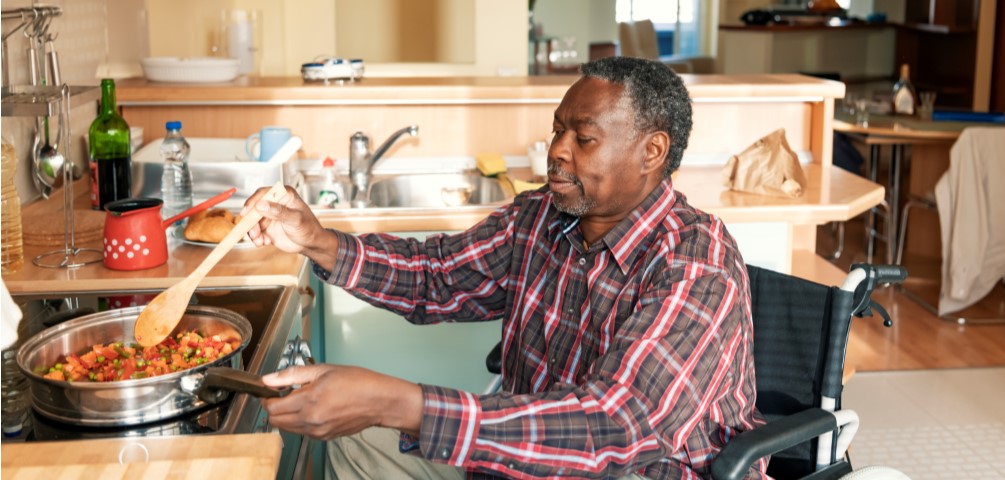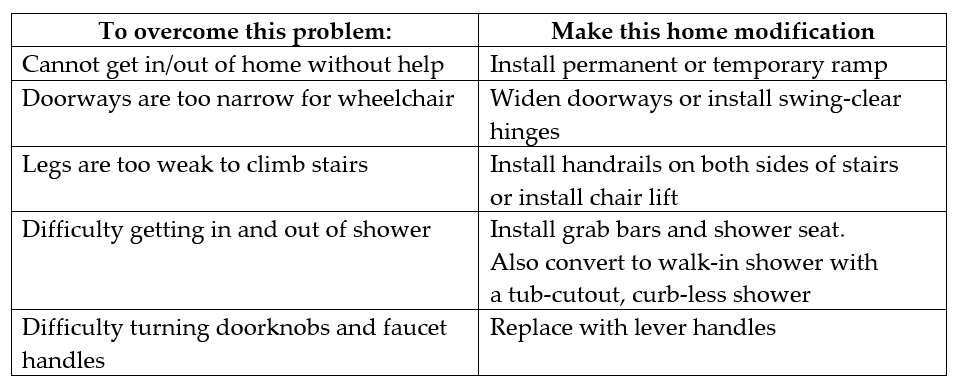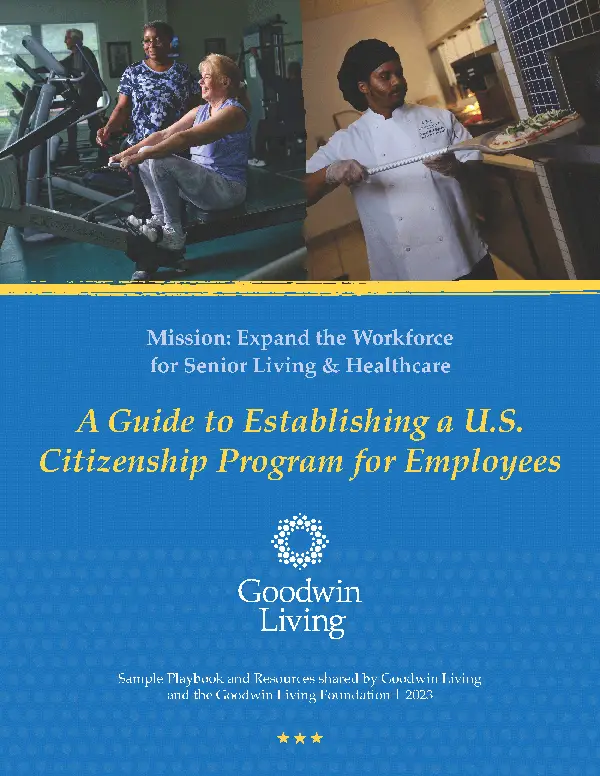
Live Comfortably - December 28, 2020
by Bryce Scholar
People often say, “home is where the heart is” and for many older adults this statement holds true. Home is the place where they have formed a foundation of love, warmth, and happy memories. It’s no wonder that the majority of older adults in our country want to live out their years in their home.
There is a term for older adults staying at home for as long as possible. It’s called “aging in place”, and a recent AARP survey determined that nearly 90 percent of people age 65 and older want to age in place for as long as possible and 80 percent believe their current residence is where they will always live.
With such high numbers of Americans desiring to stay home, it’s important to do so wisely. It’s important to make a plan so that your home remains a safe place where you can thrive as you age.
One in three seniors over the age of 65 falls each year, and sometimes a fall that occurs at home can be life-changing. Over 3 million older adults are treated in hospital emergency departments for fall injuries each year. Of those hospitalized for hip fractures, 40% never return home or live independently again and 25% will die within one year of their fall.
If aging in place for as long as possible is the goal, at what point do our homes go from being a comfortable environment to a dangerous one? More importantly, what can older adults do to remove the risks of aging in place?
Older adults are at a higher risk for in-home injuries, due to the fact that balance, eyesight, and flexibility can reduce as we age. The Center for Disease Control and Prevention reports the following about falls that occur each year for older adults:
Most existing homes have structural barriers (stairs, shower curbs, etc.) that can make it difficult for older adults and people with physical limitations to address their daily needs without assistance. Home modifications can increase safety, accessibility, and independence for anyone who wishes to remain in their home if at a certain point that home might not support them in the ways they need it to.
Home modifications are retrofits or adjustments to existing homes that are undertaken to improve physical accessibility for people with challenges including for older adults who choose to age in place. As the table below illustrates, home modifications take a variety of forms and can address any number of obstacles to independent living.

Home Modifications can vary from simple to complex. Simple modifications can include adding nonslip strips to bathroom floors, improve lighting, installing grab bars, rocker style light switches, and lever door handles. More complex modifications include installing ramps, chair lifts, stair glides, wider doorways, roll-in showers, and elevators.
Let’s do a very quick and simple home assessment to see if your home is age in place ready. Does your home have the following?
These are just a few (and inexpensive) changes you can make to your home to make it instantly safer.
Can you identify the safety risk in each situation? Take our quiz based on one of our recent home safety assessments.
Goodwin Living Incorporated now offers home safety assessments for older adults. This new and innovative service helps older adults across Northern Virginia stay safe at home.
This new GHI safety assessment aims to help older adults adapt their homes for safe everyday living by evaluating the exterior and interior of the home pinpointing safety problems, and providing solutions and product information that will allow for optimum safety.
Drawing on Goodwin Living Certified Aging in Place Specialists (CAPS), this service can help older adults make their home “aging ready”. The Goodwin Living CAPS have been trained in the needs of the aging population, common remodeling projects and expenditures, code and standards, product ideas and resources. CAPS professionals utilize universal design principles to create a safer, more comfortable and more independent life in the home both now and in the future. Working with a certified aging in place specialist gives older adults the assurance they are being served by someone who has the training in crafting solutions that meet independent housing needs of older adults.
We recently conducted home safety assessments for members of Goodwin Living At Home and here’s what one couple said about their experience:
“We were very impressed by the detailed examination of our home, inside and out, and the report was quite thorough. We would have never thought to change to LED bulbs, or to put a list of emergency numbers next to each phone, or to park in front of the house for safety reasons. After living in our home for 30+ years, we’ve become familiar with all of its features, good and bad. It took an expert’s eye to point out which were the bad ones.”
If you are interested in the Home Assessment and Modification Program, contact Bryce Scholar.
_______________________
As Director of Safety & Security for Goodwin House Bailey’s Crossroads, Bryce Scholar coordinates, manages and oversees the safety and security program for the GHBC campus. Following two years as Assistant Security Director of Mt. Vernon Estate, Bryce joined GHI in 2015 and is a Certified Aging in Place Specialist (CAPS) and a Senior Home Safety Specialist. He enjoys woodworking and working out, and resides in Alexandria City with his wife, dog, and two cats. He and his wife are expecting their first child in April 2021.
